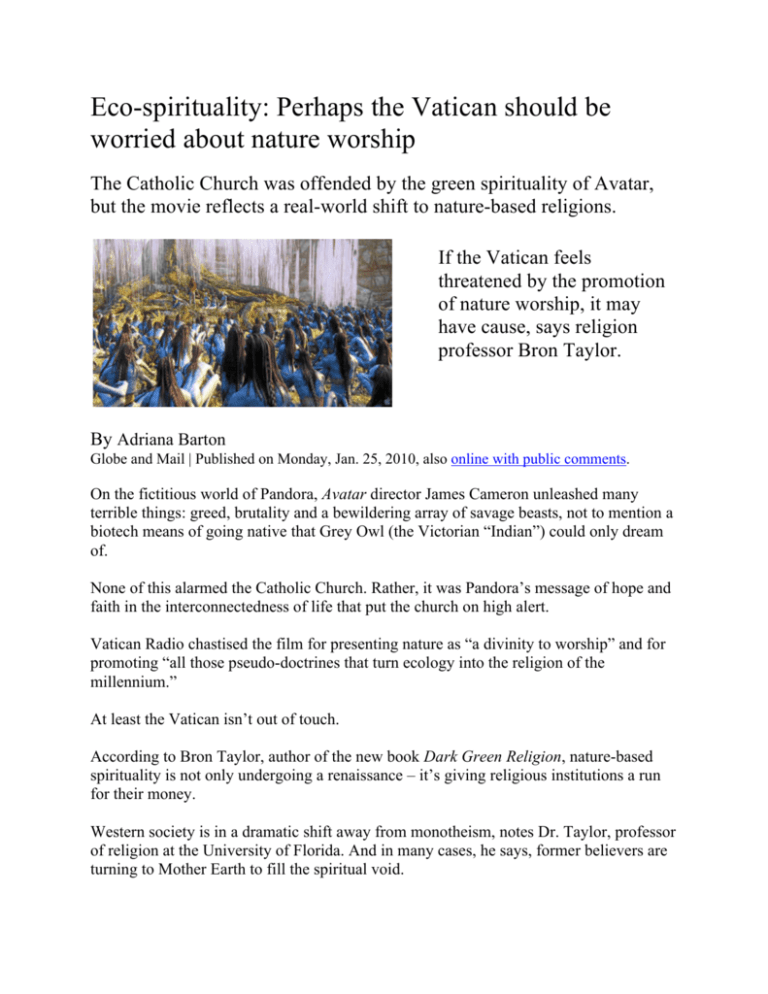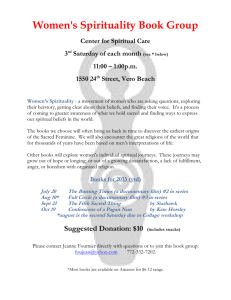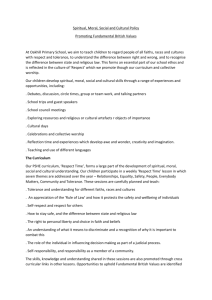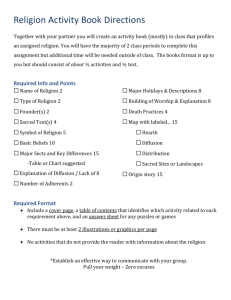Eco-spirituality: Perhaps the Vatican should be worried
advertisement

Eco-spirituality: Perhaps the Vatican should be worried about nature worship The Catholic Church was offended by the green spirituality of Avatar, but the movie reflects a real-world shift to nature-based religions. If the Vatican feels threatened by the promotion of nature worship, it may have cause, says religion professor Bron Taylor. By Adriana Barton Globe and Mail | Published on Monday, Jan. 25, 2010, also online with public comments. On the fictitious world of Pandora, Avatar director James Cameron unleashed many terrible things: greed, brutality and a bewildering array of savage beasts, not to mention a biotech means of going native that Grey Owl (the Victorian “Indian”) could only dream of. None of this alarmed the Catholic Church. Rather, it was Pandora’s message of hope and faith in the interconnectedness of life that put the church on high alert. Vatican Radio chastised the film for presenting nature as “a divinity to worship” and for promoting “all those pseudo-doctrines that turn ecology into the religion of the millennium.” At least the Vatican isn’t out of touch. According to Bron Taylor, author of the new book Dark Green Religion, nature-based spirituality is not only undergoing a renaissance – it’s giving religious institutions a run for their money. Western society is in a dramatic shift away from monotheism, notes Dr. Taylor, professor of religion at the University of Florida. And in many cases, he says, former believers are turning to Mother Earth to fill the spiritual void. He cites findings that large numbers of people in Europe and the United States express “deep trust in nature as inherently spiritual or sacred.” The trend is obvious on the West Coast. Only 22 per cent of British Columbians attend a religious institution once a month or more, according to a 2008 poll by sociologist Reginald Bibby, compared with 38 per cent in Ontario. Instead, spiritual seekers are forming de facto congregations in nature’s cathedrals – mountain valleys and old-growth forests. Toni Pieroni, a registered clinical counsellor in Vancouver, says she discovered ecospirituality about 15 years ago after going through a divorce. “It’s become very much part of my [spiritual] practice,” she says. “If I don’t get out and walk by the trees and by the ocean, I start to suffer.” In eco-spirituality workshops that she leads outside her counselling practice, Ms. Pieroni encourages people to think of the Earth as a sentient being, she says, “and to contemplate that the Earth that they’re walking on is also conscious of them.” Similarly, in the movie Avatar, the blue-skinned Na’vi people worship a biological force that unifies their planet and all its life forms. The force is so tangible that the Na’vi can literally plug into it by connecting the tips of their long tails to the fronds of sacred trees. The movie’s spiritual themes align with Ms. Pieroni’s own beliefs, she says. “It was pretty amazing to see something like that in a Hollywood blockbuster.” On Pandora, the Na’vi people form circles to channel their world’s unifying power, notes Maureen Jack-LaCroix, an eco-spiritual facilitator and event producer known for her work on New Music West Festival and Tears Are Not Enough/LiveAid. And in Vancouver, hundreds of people gather once a week in 40 community circles organized by Be the Change Earth Alliance, which Ms. Jack-LaCroix launched in 2008. While the groups are open to people of all faiths, the goal is to restore a sense of connection with Earth’s life-support systems and to commit to actions that support sustainability, Ms. Jack-LaCroix explains. “The essence of spirituality is feeling connected and not alone,” she says. Dr. Taylor says that dark green religion, despite its ancient pagan roots, is grounded in scientific evidence of DNA and the interrelatedness of life. “You don’t have to rely on some supposed revelation that somebody else had somewhere else in some distant time.” Unlike faiths that promise heaven in the afterlife, eco-spirituality calls upon adherents to treat the biosphere as paradise on earth, he explains. Figures such as Al Gore have called environmental destruction a “spiritual crisis.” Nevertheless, as Dr. Taylor points out in his book, modern forms of eco-spirituality have the trappings of conventional faiths. Like Christianity, Judaism and Islam, it has moderates, mystics and fundamentalists. Followers range from scientists and locavores to radical environmentalists, extreme kayakers, surfers and New Agers involved in eco-psychology, the study of human alienation from the natural world. The movement has latter-day prophets, including naturalist Henry David Thoreau and Sierra Club founder John Muir, and its own sacred texts, notably Charles Darwin’s On the Origin of Species, in which the theory of evolution suggests a kinship between humans and all living things. It has modern-day crusaders, such as Jane Goodall and David Suzuki, who wage campaigns to protect nature’s “sacred balance.” And its mythologies have permeated the mainstream, Dr. Taylor says. He mentions the giant, sentient tree-creatures who defended their ancient forest in The Lord of the Rings, the Circle of Life song in Disney’s The Lion King and the reverent approach to documenting nature in BBC’s Planet Earth series. “This stuff has deep cultural roots.” Although there is no central organizing body, devotees celebrate their own holidays – equinoxes, solstices and Earth Day – and make mass pilgrimages to sites such as the Carmanah Valley on Vancouver Island and Walden Pond in Massachusetts. For others, the practice of eco-spirituality is ritualized in “mindful” walks in nature each day, or giving praise to the Earth as they consume their vegan meals. Gaia disciples may not convince the quarter of Americans who, according to a 2009 Gallup poll, dismiss the theory of evolution – or the faiths that consider worship of Mother Earth to be idolatry. But Dr. Taylor says it’s hard to deny scientific data that explain the processes of nature while also uncovering greater mysteries. For modern, well-educated people, he insists, “there’s no firmer platform on which to build a world view and spirituality than that which we know damn well for sure.” For more on dark green religion, see http://www.brontaylor.com.









